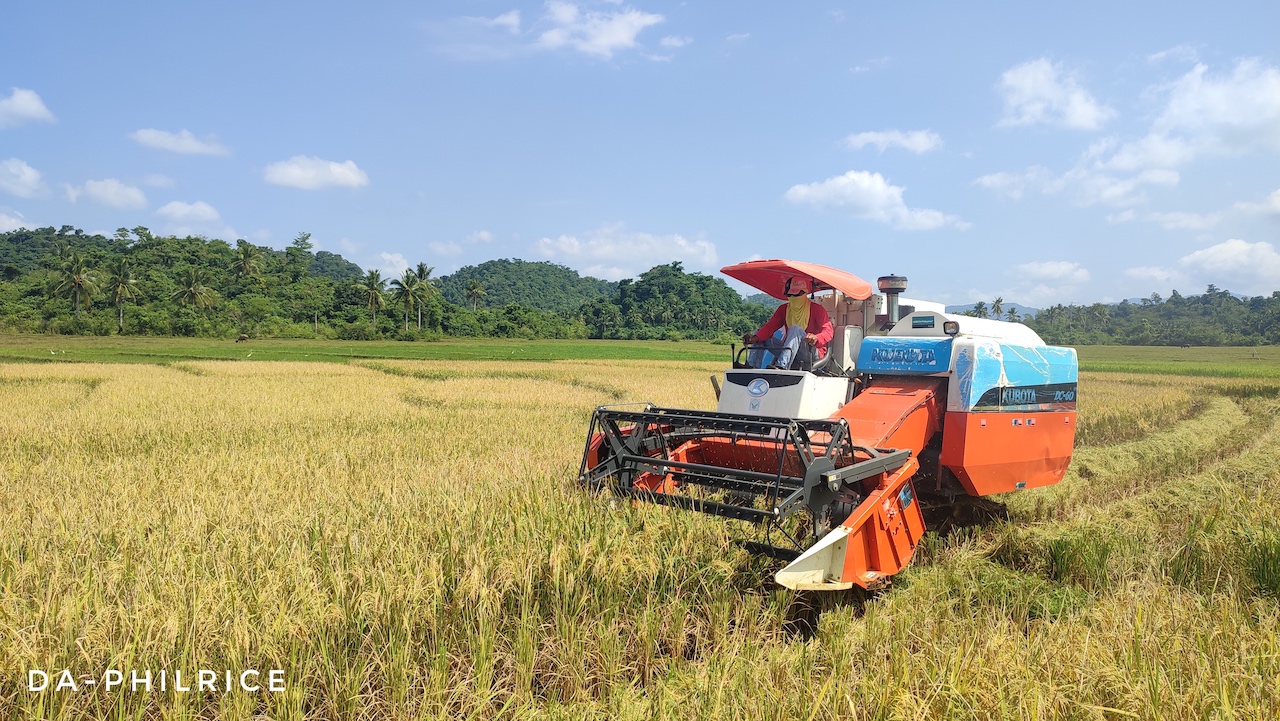From Potential to Progress: Latest Developments in Golden Rice Deployment in the Philippines
| |
In the Philippines, about two million children under five are at risk of vision issues and weak immune systems. These symptoms are consequences of diets lacking in Vitamin A. This number is equivalent to one out of five Filipino children from the less fortunate communities in the country with Vitamin A deficiency (VAD). This preventable nutritional problem impacts the Philippines and an estimated 190 million children globally.
Several initiatives have addressed this problem, including supplementation, diversified diet, and food fortification. Yet, many are still being missed. One of the complementary solutions to these initiatives is now in the hands of Filipino farmers—a healthier kind of rice known as Golden Rice. This effort was initiated in 1982 by Dr. Ingo Potrykus of the Swiss Federal Institute of Technology and Dr. Peter Beyer of the University of Freiburg, Germany, and aimed to address VAD by developing a kind of rice that can provide Vitamin A in the diet.
Contribute to food and nutrition security
Co-inventors have since donated the Golden Rice technology for humanitarian reasons. Through genetic engineering, genes from corn and a common soil bacterium were harnessed to produce beta-carotene in the rice grain. This beta carotene, converted into Vitamin A by the body, is the same kind of beta carotene found in green leafy and yellow-colored vegetables, orange-colored fruits, and vitamin supplements and food ingredients. Golden Rice was approved for food, feed, and processing in 2019 and for planting in 2021 in the Philippines after the Bureau of Plant Industry proved it is as safe as conventional rice varieties.
The Philippine Rice Research Institute (DA-PhilRice), in close collaboration with the International Rice Research Institute (IRRI), has been instrumental in developing Golden Rice, now registered in the country as NSIC 2022 Rc 682GR2E (Malusog 1) rice variety. The agency operates on a multi-year deployment plan that targets Golden Rice to contribute to food and nutrition security by 2027. DA-PhilRice aims to produce Golden Rice that contributes a 10 percent share of the country’s total rice production and meets the rice requirement of 100 percent of households at risk of VAD.
Implement market- and program-based initiatives
The deployment commenced with distributing free seeds to target provinces with high VAD incidences. Farmers from the priority areas who are interested in participating in seed or grain production are encouraged to connect with DA-PhilRice branch stations. Partnerships with local government units and other agencies are being forged to implement market- and program-based initiatives to ensure Golden Rice will provide significant health benefits, especially to those who need it most. More locations will be included in the deployment as more seeds become available for planting.
In 2022, the pilot planting of Malusog Rice was started. Then, Department of Agriculture Secretary William Dar led the ceremonial handover of Malusog Rice seeds to growers and producers at the PhilRice Central Experiment Station in Nueva Ecija for the wet season rice planting. In June, DA-PhilRice announced that the first seven provinces that will initially plant Malusog Rice are Maguindanao, Quirino, Catanduanes, Samar, Antique, Lanao del Norte, and Agusan del Sur. Maguindanao has one of the highest cases of stunting among infants and children aged five years and below and will be the first province to avail of the health benefits of Malusog Rice.
In late December 2022, the first harvest of Malusog Rice from 17 pioneer production sites produced more than 100 tons of fresh paddy of beta-carotene-enriched rice. This first harvest was mainly used for promotion, distributed especially to target households in selected provinces with preschool children at risk of VAD and undernutrition and pregnant and lactating mothers. The municipalities of Viga and Virac in Catanduanes received promotional packs of Malusog Rice as the province has one of the highest incidences of malnutrition in the country, according to the Expanded National Nutrition Survey conducted by the Department of Science and Technology’s Food and Nutrition Research Institute.
Malusog Rice is indeed marketable
Antique Province Governor Rhodora J. Cadiao said Malusog Rice could help address the province’s VAD problem among children. Farmer-cooperators also showed their support and delight as the first to plant and harvest Malusog Rice in their respective provinces. “I have observed that Golden Rice has good quality seeds, and I want to taste it already. It also has good characteristics in terms of its elongated stem. I was encouraged to be a cooperator of GR to help the government minimize cases of malnutrition,” said Leo Franco Ebardo, a seed grower in the province of Agusan del Sur.
Emerson, a farmer from Antique province, harvested about five tons of Malusog Rice on October 7, 2022, and shared his satisfaction. “The stalks are sturdier compared to other seed varieties. It does not get lodged…To my fellow farmers, I encourage them to plant Golden Rice when the supply increases.”
A thanksgiving celebration to formally recognize the farmer-partners and local officials who helped in the initial deployment of Malusog Rice was held in Antique province in March 2023. During the event, the Provincial Board of Antique announced its resolution supporting Malusog Rice cultivation and consumption. According to DA-PhilRice, the initial market testing they conducted in Central Luzon early this year showed that Malusog Rice is indeed marketable, with its pricing comparable with the prevailing price of regular milled rice in the region.
Malusog Rice holds a promising future in addressing Vitamin A deficiency in the Philippines and many developing countries. Its potential benefits could help improve agricultural productivity and healthcare costs and stimulate economic growth in developing countries. Further collaboration among scientists, policymakers, and communities will ensure its effective implementation, revolutionize VAD prevention and contribute to global health and nutrition.
This article was first published in Cornell Alliance for Science Blog.
| Newer Post | Archive | Older Post |
Science Speaks is ISAAA Inc.'s official blog. Weekly blog articles, authored by ISAAA writers, partners, and invited contributors, aim to help share, disseminate, and promote scientific knowledge and its vital role in achieving global agricultural sustainability and development. Your support to Science Speaks will help us achieve this goal. You can help us by donating as little as $10.


